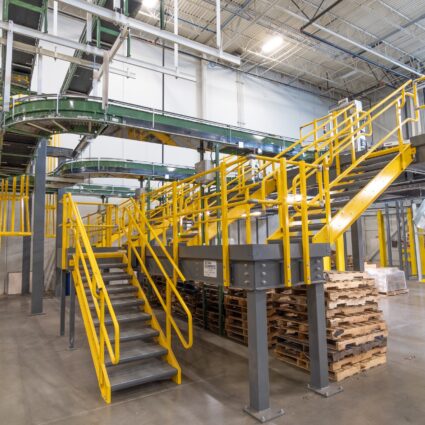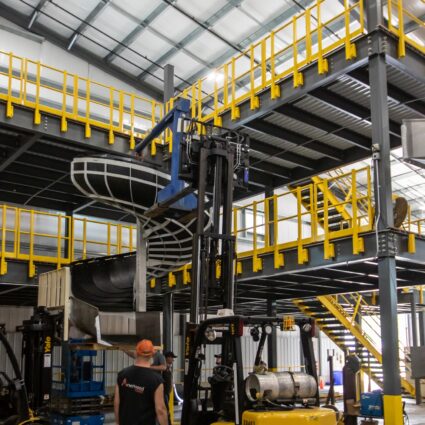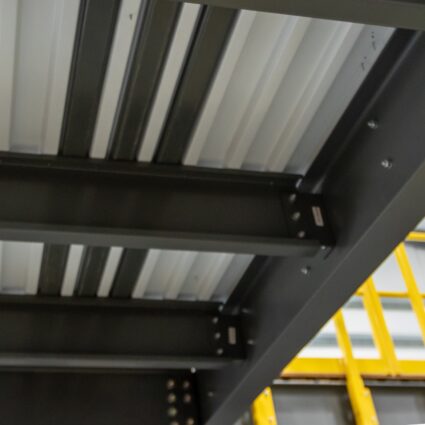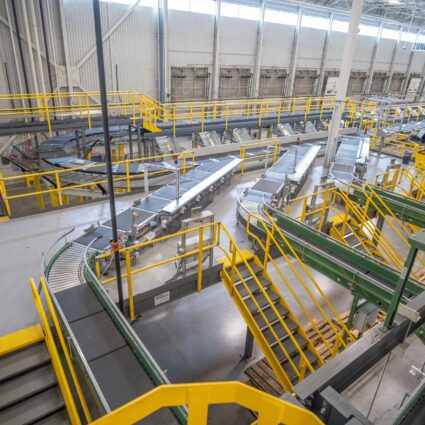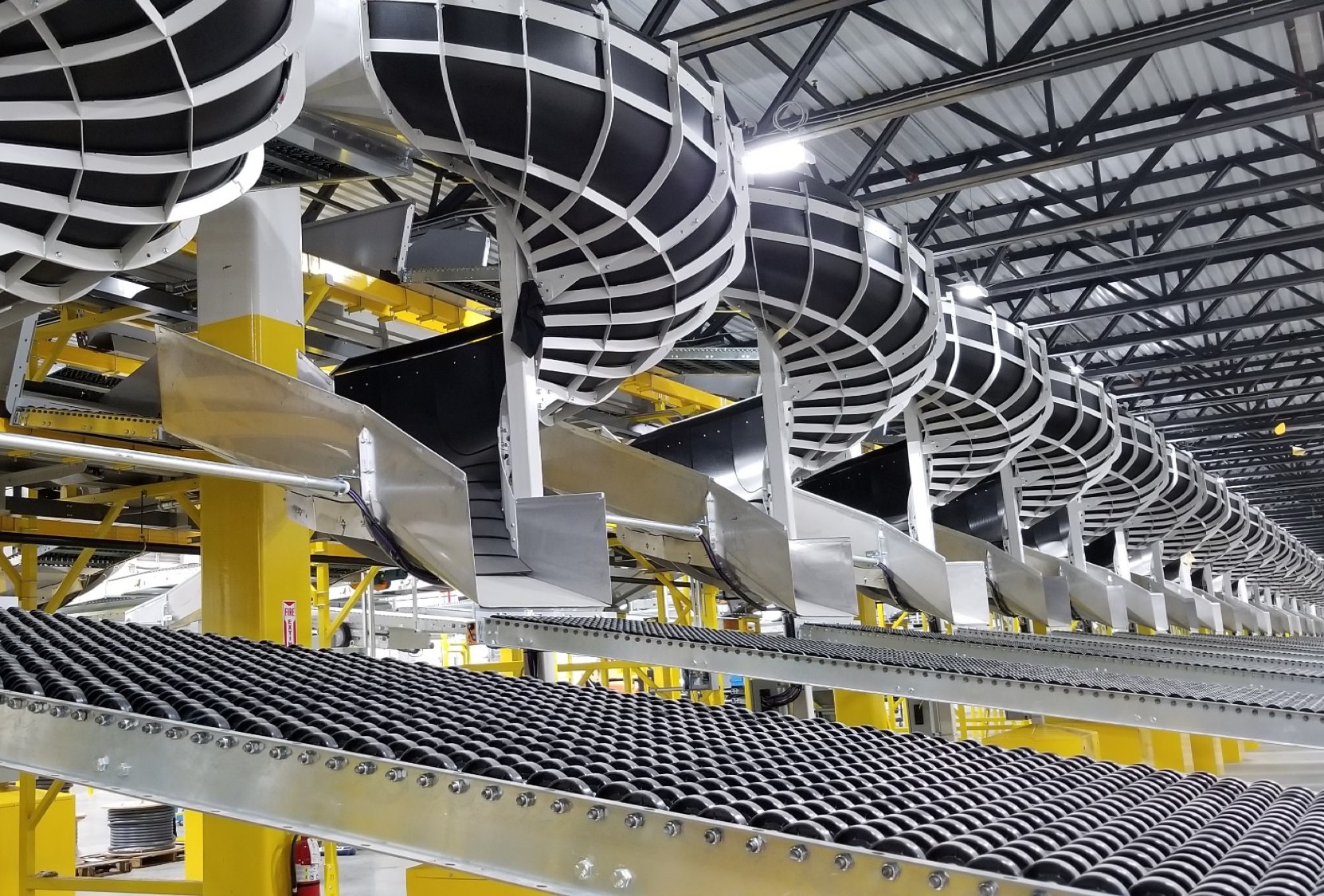
Should You Clean Your Steel Chutes and UHMW Chutes? Our Experts Weigh In
When it comes to maintaining your material handling systems, understanding the key maintenance differences between UHMW chutes and steel chutes is critical.
While UHMW chutes are designed for virtually maintenance-free operation, steel chutes require a consistent cleaning and lubrication routine to stay efficient and safe.
In this article, we’ll explore the distinct care requirements for each type of chute, why proper maintenance matters, and how it impacts performance, longevity, and compliance.
Should You Clean UHMW Chutes?
UHMW chutes are engineered for maintenance-free performance. Thanks to their surface structure, UHMW chutes are designed to handle heavy use without wear, tear, or continuous maintenance.
“UHMW chutes require no wax, no lubricant, and no ongoing cleaning routines. They’re built to work as hard as your operations do.” – Andrew Beebe, VP of Chutes and Field Services
The only time cleaning may be necessary is right after installation. Your UHMW chute installer will wipe down the chute with rubbing alcohol and a microfiber cloth. This is all it takes to prepare the chute for use. However, if you notice that a sticker or piece of package debris adheres to the chute, simply peel it off or remove it using a microfiber cloth. There’s no need to wash or lubricate the chute—it is designed to maintain its surface efficiency on its own.
Packages and materials sliding down the chute daily create a natural flow path that enhances performance. This self-maintaining design ensures items move at the right speed, reducing friction while protecting product integrity.
With UHMW chutes, you gain efficiency and durability without the hassle of upkeep. Designed for minimal intervention, UHMW chutes let your operations run smoothly so you can focus on what matters most—your business.
Why Regularly Steel Chute Cleaning is Essential
Steel chutes require routine cleaning and lubrication to maintain optimal performance and longevity.
“Unlike UHMW chutes, steel chutes benefit from regular care and lubrication to keep them clean, efficient, and operating at their best.” – Andrew Beebe, VP of Chutes and Field Services
Your steel chute manufacturing and installation team will provide you with all of the information you’ll need to properly maintain your steel chute. Here are some of the key reasons you’ll want to ensure a consistent maintenance and cleaning schedule.
Cleaning and Lubricating Steel Chutes Prevents Material Buildup
Cleaning your steel chutes at the end of each shift prevents debris like dust, grease, and packaging remnants from accumulating. This routine maintenance helps avoid blockages and keeps material flow smooth. Additionally, applying chute lubrication—a specialized blend designed for industrial use—ensures the chute stays clean and ready for optimal operation.
Prolong Chute Lifespan
Steel chutes are cleaned and waxed after installation, and will require daily lubrication to maintain efficiencies and to ensure longevity. We often recommend that users lubricate the steel chute at the end of each shift to minimize friction, reduce wear and tear on the surface, and keep the chute looking and functioning like new. This maintenance routine extends the lifespan of your chute, ensuring reliable performance for years to come.
Ensure Safety and Compliance
A clean and well-lubricated steel chute enhances safety by reducing fire hazards associated with material buildup. Daily cleaning and lubrication also help meet industry cleanliness and safety standards, providing peace of mind for your operations.
Incorporating a consistent cleaning and lubrication routine ensures your steel chutes remain efficient, durable, and compliant—ready to support your daily workflow.
Tools and Materials Needed for Cleaning Steel Chutes
Proper cleaning of steel chutes requires the right tools and materials to ensure efficiency, safety, and the chute’s longevity.
“Using the appropriate techniques and equipment can make all the difference in maintaining optimal chute performance while preventing damage.” – Andrew Beebe, VP of Chutes and Field Services
Here is a helpful list of key cleaning items:
- Soft Brushes and Non-Abrasive Sponges: Ideal for removing surface debris without scratching or damaging the steel.
- Microfiber Cloths or Cleaning Rags: Useful for wiping down surfaces and applying cleaning agents.
- Air Compressors: Effective for blowing out fine dust and particles lodged in hard-to-reach areas.
- Pressure Washers: Helpful for tackling stubborn debris, but always use with caution to avoid damaging the surface.
- Mild Detergents or Industrial Cleaners: Ensure they are specifically formulated for steel to avoid corrosion or other adverse effects.
- Specialized Chute Lubricant: Designed to keep steel chutes smooth, clean, and shiny while enhancing material flow.
- Safety Gear for Cleaning Personnel: To protect against chemicals and debris during the cleaning process, workers should use gloves, safety goggles, and respirators when needed.
Managing Downtime During Cleaning
Cleaning chutes should not come at the expense of productivity. To minimize workflow disruption, it’s important to plan chute cleaning schedules around low-activity periods, such as after shifts or during scheduled maintenance windows.
“Ensure clear communication with staff and detailed cleaning plans to streamline the process and allow for efficient cleaning that keeps productivity on track.” – Andrew Beebe, VP of Chutes and Field Services
Proper maintenance is essential for keeping your chutes—whether UHMW or steel—operating at peak efficiency. By following best practices and using the right tools, you can ensure your material handling systems remain reliable, efficient, and ready to support your operations.
Questions? Take a look at our additional resources:

